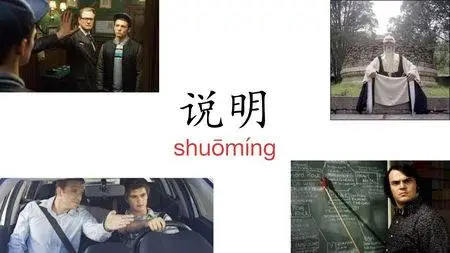How to Memorize Chinese Words – 4 EXCELLENT Techniques

“Jeepers! Them there Chinese squiggles sure are a head-scratcher!”
They sure look like it 1960’s rural Appellation woodsman named Jasper! But you know what? You already know a lot about them!
“I’ll be darn-tootin’!”
Chinese vocabulary acquisition is far more straightforward than you might think so long as you follow any or all of these four steps:
1. Learn the Characters
2. Make Connections to the Sound
3. Link the Word to a Memory
4. Use Imagery
In typical article writing fashion, let’s take them one-by-one with some headers and body text, shall we? We’ve not been writing too many blog posts today, have we?
1. Learn the Characters
“Aw, Heck, easy for you to say. Just learn me ‘dem Chinese squiggles? How in tarnation am I supposed to do that?”
Glad you asked, Jasper. You shoot little movies in your head using The Hanzi Movie Method, it’s never been easier! But that’s not the point here; the point is this, you listening? PUBLIC SERVICE ANNOUNCEMENT:
**If You Learn Characters Most Chinese Words Are Super Simple to Acquire**
Unlike English with its multiple root languages, Chinese has far fewer contradictions in its general rules. Ever heard that rule “‘i’ before ‘e’ except after ‘c’?” Ha, it ought to be: “‘i’ before ‘e’ except after ‘c,’ oh, and about 30 exceptions to that original statement of ‘c’ being an exception.” English, sort yourself out! (jk, luv u babe).
In Chinese, the majority of words are just two puzzle pieces put together. Much like this:
“Hey, what should we do with this ‘ground’ right here?”
“How about we make a spot for children to ‘play’?”
“Brilliant! We shall call it, a ‘Playground’!”
“Great Scott, what a genius!”
Most Chinese words are like this! You’ll only recognize how easy they are, however, if you learn the characters first. Get on it!
2. Make Connections to the Sound to Memorize Chinese Words

“你好 níhǎo? Those Chinese folks wonderin’ HOW they gotta pair ‘a KNEES? Golly!”
Haha, no, Jasper, that’s actually how Chinese people say “hello,” but you know what? It sure does sound like that, doesn’t it?
As you attempt to find a connection to a new vocabulary word, say it out loud. Does anything come to mind? Is there any connection, even a tenuous one, to a sound you already recognize? What if you visualized someone staring at their knees, perplexed, wondering HOW these KNEES got there, only to then say HELLO to several new acquaintances that entered the room?
Are you a bit into your Chinese learning journey? Surprised to find out that “肌肉” jīròu – muscle” is the same pronunciation as “鸡肉 jīròu – chicken meat?” Can you imagine a chicken that is jacked af like Arnold Schwartzenegger in his prime?
Whether the Chinese word you are learning sounds like something from your native language or a previously learned Mandarin word, taking a moment to recognize the sound connection will make the memory all the more solid.
3. Link the Words to a Memory
“Heck, I remember Ernest and me down the barn paintin’ the fence when Ma’s horse all sudden like got spooked, yelled somethin’ fierce & high-tailed it on outta there!”
Whoa, Jasper! That does sound surprising! Wonder if that *ingrained emotional memory* could be applied to learning the Chinese word for “surprised,” or “frightened”? Oh right, it absolutely can.
If you remember something, that means it made enough of an impact on you that your highly-evolved meat-computer between your ears has determined it might be useful knowledge in the future. Memories are cool that way. If you have a memory that relates to a new vocabulary word…oh wait, sorry we miswrote…WHEN you FIND your memory that connects to a new vocabulary word, USE IT! Otherwise, you’re making things harder on yourself. Your memories are the most potent set of tools that make learning easier.
4. Use Images to Memorize Chinese Words

I saw me one of ‘dem color photographs last week, whoowee!”
Jasper, you wouldn’t even believe what we have at our disposal here in 2019! You can write a word into a massive information super-database and within .1 seconds have a WALL of color photographs, would you believe it?
We homo sapiens are far more evolved to recognize images than we are text. This article does a better job than we’ll be able to in explaining why, but the essential takeaway is this: Use pictures and use them often.
In The Mandarin Blueprint Method, we show you how to quickly take your lived experience and turn it into an intelligent Google image search. From there, it’s two clicks away from the image you choose automatically embedding itself into your Spaced-Repetition [LINK] Vocabulary flashcard. It’s the technology that we’re already used to but would knock our friend Jasper’s socks off. Applied correctly, and you’re not only using images, you’re using images that relate to your lived experience. Suddenly Rosetta Stone needs to step up their game!
Living Links

At every stage of this game, remember to keep searching your brain for those links *you already have* to Chinese. You’re not a newborn baby (if you are, hey holy crap well-done learning to read so fast!), so you have experiences that can help you memorize Chinese words that much quicker. In a way, it’s a resurrection of your past to create a more connected future. Transcendence FTW!








